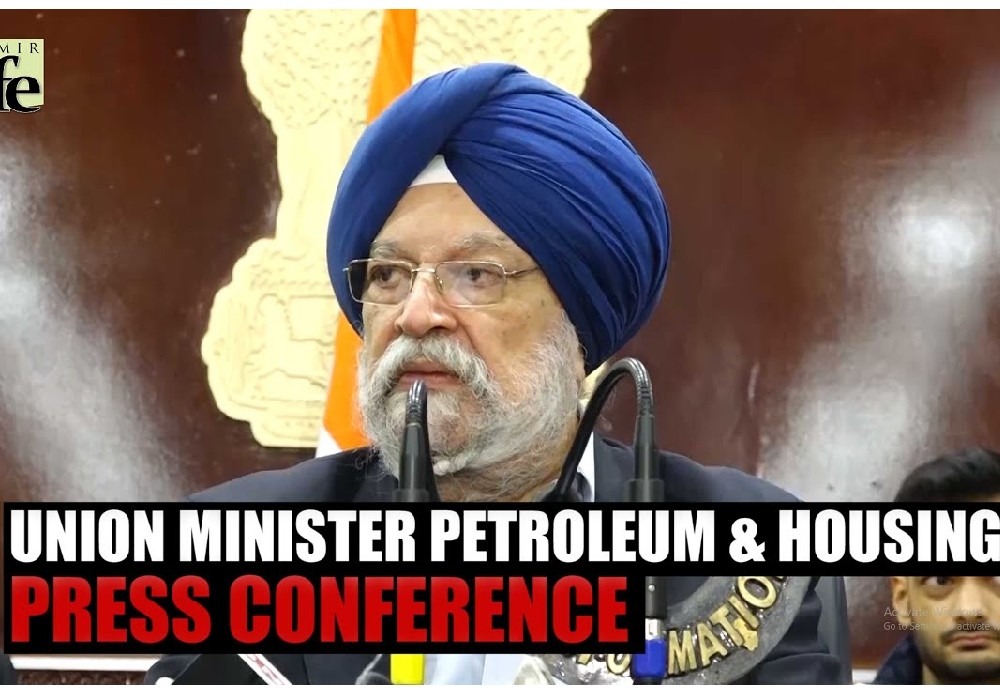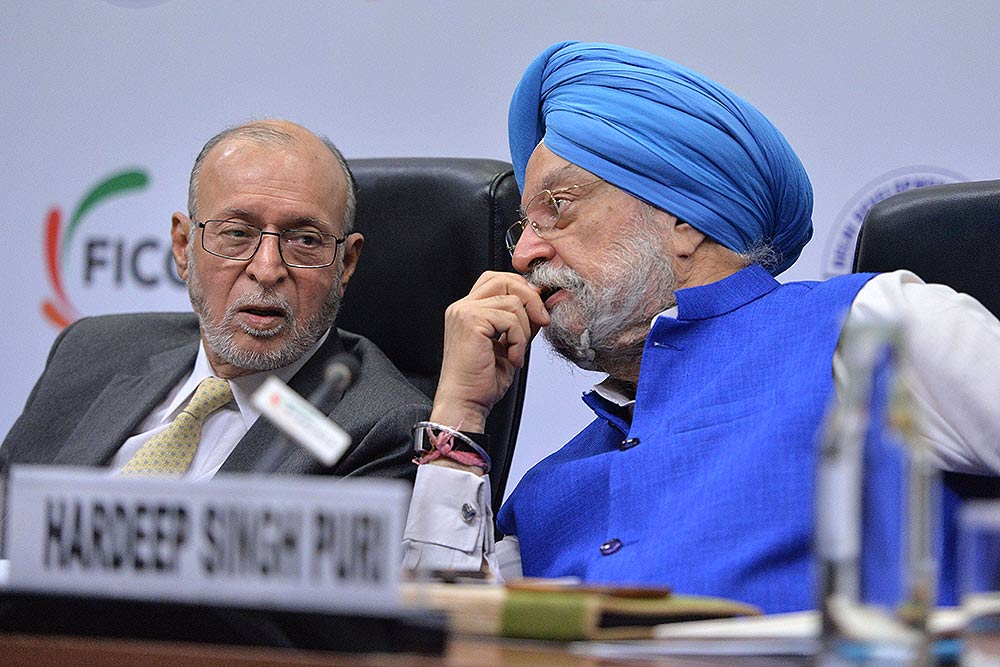Prime Minister Narendra Modi, inaugurated the India Energy Week 2023 in Bengaluru, Karnataka, running from February 6 to 8, this week.
Union Minister for Petroleum and Natural Gas Hardeep Singh Puri, Governor Thaawarchand Gehlot and CM Basavaraj Bommai were also present at the event.
Budget 2023 has consolidated and encouraged our green energy and energy transition plans, says PM Narendra Modi at India Energy Week. The event focuses on the country’s goal of energy transition and energy security and achieving net-zero emissions by 2070, according to a government statement.
Major ‘green’ features of the energy week
The Indian Energy Week is being touted to showcase India’s rising prowess as an energy transition powerhouse. Being one of the most populous and rapidly developing nations, the onus is on India to lead the world in transitioning to clean, green energy.
PM will also launch multiple initiatives in the field of green energy and will also flag off the Green Mobility Rally. The rally will witness the participation of vehicles running on green energy sources and will help create public awareness for green fuels.
The Prime Minister will launch the uniforms under the ‘Unbottled’ initiative of Indian Oil. Aimed to phase out single-use plastic, Indian Oil has adopted uniforms for retail customer attendants and LPG delivery personnel made from recycled polyester (rPET) and cotton.
Each set of uniforms of Indian Oil’s customer attendant shall support the recycling of around 28 used PET bottles. Indian Oil is taking this initiative further through ‘Unbottled’ – a brand for sustainable garments, launched for merchandise made from recycled polyester. Under this brand, Indian Oil targets to meet the requirement of uniforms for the customer attendants of other Oil Marketing Companies, non-combat uniforms for the Army, uniforms and dresses for Institutions and sales to retail customers.
Another important innovation to be launched is the twin-cooktop model of Indian Oil’s Indoor Solar Cooking System and to flag off its commercial roll-out. Indian Oil had earlier developed an innovative and patented Indoor Solar Cooking System with a single cooktop. On the basis of feedback received, a twin-cooktop Indoor Solar Cooking system has been designed to offer more flexibility and ease to the users. It is a revolutionary indoor solar cooking solution that works on both solar and auxiliary energy sources simultaneously, making it a reliable cooking solution for India.
The energy landscape has radically transformed in recent years, with many newer green innovations seen both nationally and internationally. To keep up with the pace of change, the government is prepared to play a catalyst in accelerating the adoption of low-carbon options including biofuels, electric vehicles, and green hydrogen. Collaboration and transition towards low-carbon energy are crucial in India’s achievement of its climate change targets, said Union Minister for Petroleum and Natural Gas, and Housing & Urban Affairs Hardeep Singh Puri.
“To ensure a smooth supply of green energy, the government has announced an allocation of ₹35,000 crores in the country’s 2023-24 Budget. The government is implementing many programmes for green fuel, green energy, green farming, green mobility, green buildings, and green equipment, and policies for efficient use of energy across various economic sectors. We are adopting several initiatives and next-generation infrastructure for energy transition and security,” Puri said while adding that the growing energy appetite will be met through a healthy mix of energy sources.
Lifestyle for the Environment (LiFE) goals
Increasing global temperatures due to the excessive use of fossil fuels have put our planet in a state of crisis.
Estimates suggest that if requisite action is not taken against the changing environment, approximately 3 billion people globally could experience chronic water scarcity. The global economy could lose up to 18% of GDP by 2050.
In this context, the concept of ‘Lifestyle for the Environment’ (LiFE) was introduced by Prime Minister Narendra Modi at COP26 in Glasgow on November 1 2021, calling upon the global community of individuals and institutions to drive LiFE as an international mass movement towards “mindful and deliberate utilisation, instead of mindless and destructive consumption” to protect and preserve the environment.
The endeavour was to inculcate habits that add positively to the betterment of the environment. Building habits that are ‘green’ and adding input from everyone in society are great ways to fight the climate crisis on the larger front as well. In terms of a concrete goal, through LiFE, the plan is to reduce global carbon dioxide emissions by more than 2 billion tonnes by 2030.
Adding the initiatives to be taken in the Energy week accommodated with the “Panchamrit” goals presented by PM Modi at COP26, we aim to raise the non-fossil fuel-based energy capacity of the country to 500 GW by 2030; to reduce the total projected carbon emissions by one billion tonnes between now and the year 2030; and to achieve net zero emissions by the year 2070.
Although India has only 2.4 per cent of the world’s land area and is using only 6.1 per cent of the world’s primary energy, it supports around 18 per cent of the global human and the largest livestock population in the world. The actions India is taking to support climate action while millions of Indians live in poverty are unparalleled.
India as the hub for renewable energy
With a population of 1.3 billion, India has a massive demand for energy to fuel its rapidly growing economy. From a power deficit nation at the time of Independence, the efforts to make India energy-independent has continued for over seven decades.
Keeping in mind the sustainable development goals, India’s power generation mix is rapidly shifting towards a more significant share of renewable energy. Today, India is the world’s third largest producer of renewable energy, with 40 per cent of its installed electricity capacity coming from non-fossil fuel sources.
The beginning was made with hydropower, with major hydroelectric power projects appearing on the scene of India’s energy arena. Over the years, many policy and regulatory initiatives have promoted hydropower development and facilitated investments. Today, we are 5th in the world regarding usable hydropower potential.
Work on wind energy started in India during the 1960s when the National Aeronautical Laboratory (NAL) developed windmills, primarily for supplying irrigation water. Today, we have the 4th largest wind power capacity in the world, with a constant movement of wind, especially in the Southern, Western and North Western regions.
Solar energy-based applications have benefited millions of Indians by meeting their cooking, lighting and other energy needs in an environment-friendly manner. Having achieved large-scale success in solar energy solutions, India has spearheaded the International Solar Alliance (ISA) which is an action-oriented, member-driven, collaborative platform for the increased deployment of solar energy technologies.
With more innovations and policy changes expected with Energy week in regard to solar energy-based production, the march towards more efficient solar energy production and use in India does not seem to stop anytime soon.
The country’s vision is to achieve Net Zero Emissions by 2070, in addition to attaining the short-term targets, which have been constantly met, aided with various green schemes and initiatives like the current Energy week.
In 2015, India released its Nationally Determined Contributions (NDCs). Back then, the key targets were mainly to increase the cumulative electric power installed capacity from non-fossil sources to 40 per cent, and reduce the emissions intensity of GDP by 33 to 35 per cent compared to 2005 levels, by 2030.
These targets were well overachieved and concurrent additions have been made to the country’s climate goals. India has truly become a game changer when it comes to the fight against climate change and is leading by example to both developed and developing countries around the world.

देश में एक करोड़ यात्री प्रतिदिन कर रहे हैं मेट्रो की सवारी: पुरी ..

Union Minister for Petroleum and Natural Gas and Housing and Urban Affairs, Hardeep Singh Puri addressing a press conference in ..

Joint Press Conference by Shri Hardeep Singh Puri & Dr Sudhanshu Trivedi at BJP HQ| LIVE | ISM MEDIA ..
(3).jpg)
"I wish a speedy recovery to former Prime Minister Dr Manmohan Singh Ji. God grant him good health," Puri wrote. ..